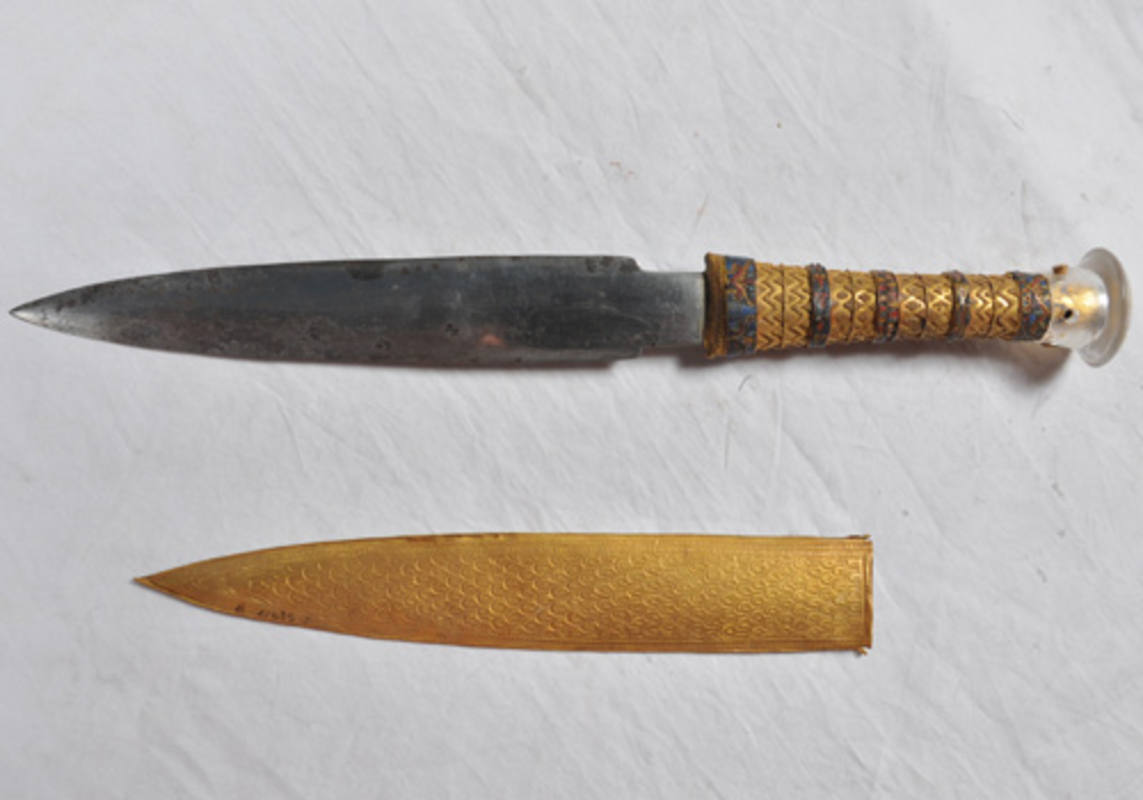Un equipo de científicos italianos y egipcios ha establecido que parte de los materiales con los que está fabricada una de las dagas del faraón Tutankhamon tiene origen extraterrestre. Y no, Tutankhamon no era un alien, sentimos decepcionar a nuestros lectores conspiranoicos. Los materiales extraterrestres no son más que níquel y cobalto, metales típicos, pero raros de encontrar en concentraciones altas en la corteza terrestre.
Todo esto tiene sentido y encaja si tenemos en cuenta que en el fondo del mar Rojo y en los alrededores de Egipto hay distintos fragmentos meteoríticos de la época del Antiguo Egipto. Uno de estos fragmentos tiene una composición bastante similar a los materiales de la daga. No es la primera vez que se encuentran objetos del Antiguo Egipto con minerales y metales meteóriticos. Al parecer, los egipcios daban un gran valor a los materiales encontrados en los meteoritos, probablemente por motivos religiosos. Por si alguien quiere ver la daga, la puede encontrar en el Museo Egipcio de El Cairo.
Tutankhamon es uno de los faraones más conocidos, no por lo que hiciera durante su mandato a nivel histórico, como Ramsés II o Cleopatra VII, sino porque su tumba fue la primera descubierta intacta, por Howard Carter en 1922. Desde entonces la cultura popular afirma que pesa una maldición de la propia momia a todo aquel que profanó su tumba, detalle en el que no vamos a entrar. Se estima que el faraón Tutankhamon fue el decimoprimer faraón de la dinastia XVIII, reinó desde los 8 ó 10 años de edad hasta su muerte causada por la malaria a los 19 años.
A team of Italian and Egyptian researchers has established that some of the materials which one of pharaoh Tutankhamon' s daggers is made has an extraterrestrial origin. We are sorry to say again to our conspiranoic readers, that no, Tutankhamos was not an alien. Extraterrestrial materials are no others than nickel and cobalt, typical metals, but not very easy to find in high concentrations in the Earth's crust.
All this makes sense if we realise that in the Red sea and all Egypt there are fragments from meteorites from the Ancient Egypt time. One of these fragments has quite a similar composition to the materials in the dagger. It is not the first time egyptologists find an object made of materials found in those meteorites. Egyptian people valued very much for the materials found in meteorites, probably because of religious issues. If anyone wants to see the dagger, he or she can find it in the Egyptian Museum in El Cairo.
Tutankhamon is one of the most famous pharaohs of all Ancient Egypt, not because he was an important pharaoh, from the historical point of view, as happens with Ramses II or Cleopatra VII, but because his grave was the first one discovered being sacked, by Howard Carter in 1922. From then on, there is a urban legend telling that the mummy cursed every person involved in the discovery, a detail in which we will not go deeper. It is estimated that Tutankhamon was the eleventh pharaoh of the eighteenth dynasty, governing since he was 8 or 10 until being 19, when he died due to malaria.
Para más información/For more information:
http://www.bbc.com/mundo/noticias/2016/06/160602_ciencia_daga_extraterrestre_tutankamon_ch
https://es.wikipedia.org/wiki/Tutankam%C3%B3n

No hay comentarios:
Publicar un comentario